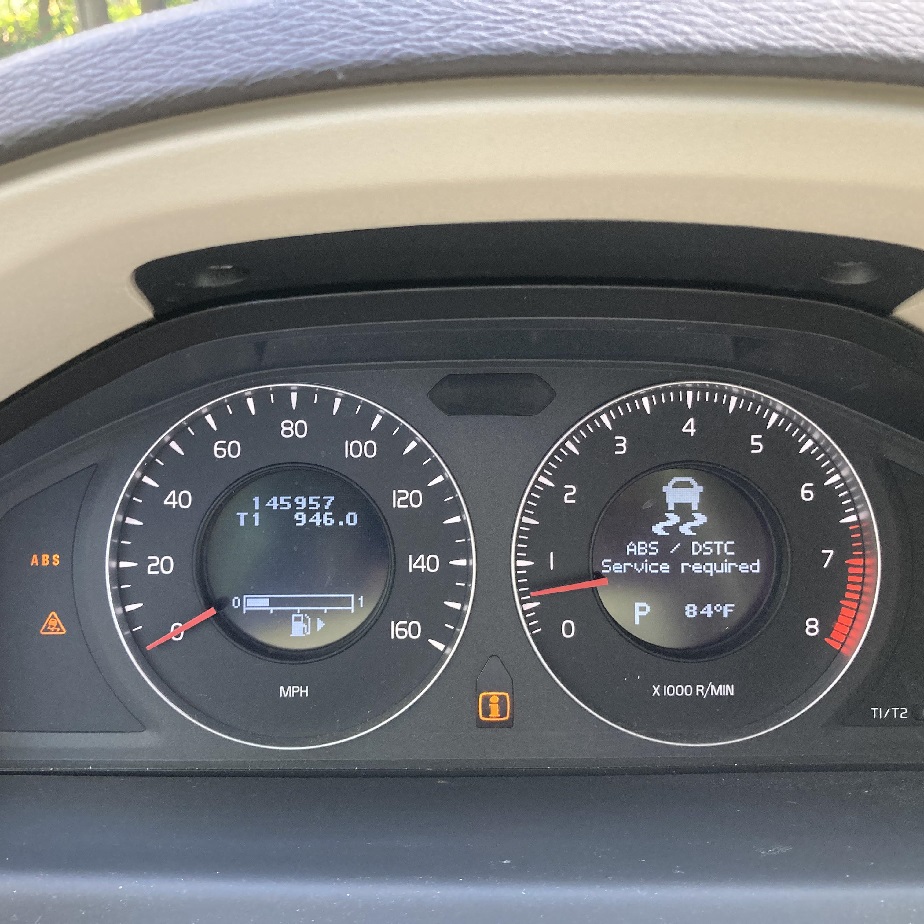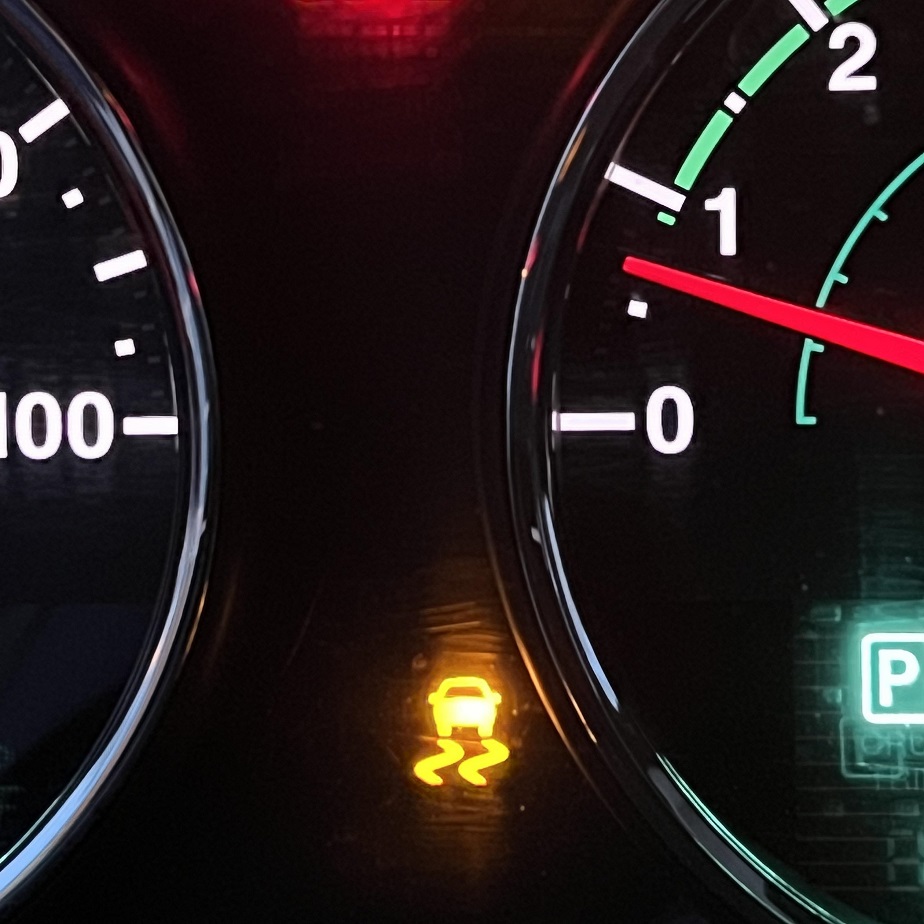Understanding Traction Control Systems
Traction control systems are vital for safe driving. They help maintain grip during acceleration by controlling wheel spin. These systems monitor wheel speed. If one wheel spins faster than others, the system reduces engine power or applies brakes to that wheel. This action restores traction and prevents skidding or sliding. Modern vehicles come with this safety feature standard. Traction control uses sensors and the vehicle’s computer to function properly. When the traction control light turns on, it signals a potential issue with the system. A car jerking could be a related symptom. It indicates the system is actively trying to regain traction. Drivers should understand how this system works. This understanding helps spot signs of trouble early. When the traction control light is on and the car is jerking, it is key to act fast. You want to ensure your safety and prevent further vehicle damage.

Common Reasons for Traction Control Light Illumination
When the traction control light on your dashboard lights up, it’s alerting you to a potential issue. It’s important not to ignore this warning. Several factors can trigger the traction control light to come on, and vehicle jerking may accompany the illumination. Here are common reasons for this happening:
- Faulty Wheel Speed Sensors: These sensors track how fast your wheels are spinning. If one breaks or malfunctions, it can cause the traction control light to turn on.
- Bad Steering Angle Sensor: The steering angle sensor helps with stability control by monitoring the steering wheel’s position. If it’s not working right, both the traction control light and ABS light might come on.
- Worn Tires: If your tires have uneven wear or are low on tread, they can’t grip the road well. This might activate the traction control system and light.
- Damaged or Dirty Wiring: Wiring connections that are damaged or covered in dirt might send incorrect signals to the traction control system, triggering the light.
- Malfunctioning Brake System: As traction control is linked to the brakes, any issues with the brake system can cause the traction control light to illuminate.
- Losing Power to the TCS: Power loss to the traction control system, maybe from a weak battery or an electrical fault, can light up the traction control indicator.
All of these issues can lead to your car jerking as the traction control system engages incorrectly. If you notice the traction control light on and your car is jerking, take time to check these common causes. This can be the first step in diagnosing and solving the problem. Remember that regular maintenance can help prevent these issues and keep your car running smoothly.
The Link Between Traction Control and Vehicle Jerking
It’s not a coincidence when the traction control light on and car is jerking. The two symptoms are often related. When your vehicle’s traction control system senses wheel slippage, it takes immediate action. This action typically involves braking the slipping wheel or reducing engine power. As a driver, you may feel this as a jerking or hesitation. It’s the system’s way of regaining control and preventing a potential slide or spin.
When traction control kicks in, it can sometimes be abrupt. This sudden response might feel alarming, but knowing it’s for safety can be reassuring. However, if the jerking sensation is recurrent or seems erratic, it’s a sign of trouble. It could mean the system is overreacting or sensing false positives. It is crucial to address these signs promptly to maintain safety and vehicle health.
The key point to remember is that if your car is jerking, the traction control light is likely on for a reason. It’s the car’s way of communicating that something isn’t quite right with the traction control system. Identifying and fixing the root cause can restore smooth driving. It also ensures that the system is ready to assist when needed. Keep this connection in mind as you troubleshoot traction control and vehicle jerking issues. It will guide you towards the right solution for your car.
How to Diagnose Traction Control Issues
Diagnosing traction control issues when your car jerks and the light is on is critical. The process requires a logical approach to uncover the problem’s source. Below are steps to help diagnose the issues effectively:
- Check the Traction Control Light: Start your engine and check if the traction control light stays on. If it does, there’s likely a system malfunction.
- Scan for Trouble Codes: Use an OBD-II scanner to check for diagnostic trouble codes. These codes can pinpoint sensor issues or system malfunctions.
- Inspect Wheel Speed Sensors: Look for visible damage to the sensors. Also, check for dirt or debris that could interfere with their operation.
- Examine Tires for Wear: Ensure your tires have even wear and sufficient tread. Uneven tread or worn tires can trigger traction control issues.
- Assess Wiring Connections: Examine wiring for signs of damage or corrosion. Clean any dirty connections and repair damaged wiring.
- Test the Steering Angle Sensor: If possible, test the sensor to see if it operates within specifications. A faulty sensor may activate the control light and cause jerks.
- Monitor the Brake System: Ensure your braking system is free of issues. Check for worn brake pads, low brake fluid, and other potential problems.
- Evaluate Power Supply: Confirm there is no power loss to the traction control system. A weak battery or electrical faults can impact system performance.
By following these steps, you can systematically identify and fix issues causing the traction control light to activate and your car to jerk. Remember, addressing these issues early can prevent further damage and ensure your safety on the road.
Step-by-Step Guide to Resetting Your Traction Control Light
When the traction control light stays on, there’s a clear process for resetting it. This can often solve the issue if it’s not triggered by a significant fault. Here’s a simple guide you can follow:
- Turn off Your Engine: Start by turning off your car’s engine. Wait a few seconds for all systems to shut down completely.
- Restart the Engine: After waiting, restart the engine. Observe if the traction control light turns off after a few seconds, as most cars perform a self-check when ignited.
- Check the Dashboard: If the light remains on, it may indicate a deeper issue needing attention.
- Press the Traction Control Button: Some vehicles come with a button to turn traction control on and off. Press it to reset the system manually.
- Drive the Vehicle: In some cases, driving for a short distance can help the system recalibrate and potentially turn the light off.
- Disconnect the Battery: As a last resort, disconnect the car battery for a minute. This can reset the car’s computer systems.
- Reconnect and Start the Engine: Reconnect the battery safely and start the engine again. Check if the traction control light has been reset.
Please remember that resetting your traction control light with these steps doesn’t guarantee a permanent fix. It’s often a temporary solution for minor glitches. If the traction control light on and car is jerking persists, deeper diagnostic work may be necessary. Regular maintenance and timely attention to symptoms will prevent the need for frequent resets.
DIY Fixes vs. Professional Repairs for Traction Control Problems
Sometimes, you can fix traction control issues at home. Simple fixes include checking tire pressure and cleaning wheel sensors. If tires are uneven, inflate them to the correct pressure. Dirty sensors can cause false readings. Clean them gently with a rag. Check wheel speed sensors for damage. Unplug and replug connectors to ensure good contact. If these easy checks don’t clear up the issue, it might be time for professional help.
Professionals have advanced tools for diagnosis and repair. They can handle complex jobs like replacing sensors or fixing wiring issues. Some tasks require specialized knowledge. For example, recalibrating steering angle sensors or diagnosing brake system faults. If you’re unsure about a DIY repair, it’s safer to consult a professional. Remember, your safety on the road is most important. It’s better to invest in a professional repair than to risk a malfunction.
Maintenance Tips to Avoid Traction Control and Jerking Issues
Regular maintenance is key to preventing issues with your traction control system and the jerking of your vehicle. Let’s go over some essential tips to keep your system running smoothly:
- Regularly Check Your Tires: Ensure your tires are properly inflated and have enough tread. Replace them if they are worn out.
- Inspect Wheel Speed Sensors: Clean any debris off the sensors. Check for damage or wear.
- Monitor Your Battery: A weak battery can cause electrical issues. Test it regularly and replace if needed.
- Keep the Brakes in Good Shape: Replace worn brake pads and keep the fluid at the right level.
- Watch for Dashboard Alerts: Don’t ignore the traction control light if it comes on. It could indicate an issue that needs prompt attention.
- Clean and Secure Wiring: Look for corroded or loose wires. Clean and secure connections to avoid faulty signals.
- Avoid Harsh Driving Conditions: If possible, don’t drive in harsh conditions that can put stress on your traction control system.
- Schedule Regular Check-ups: Have a professional check your vehicle’s traction control system as part of routine maintenance.
By following these simple steps, you can often avoid traction control and vehicle jerking issues. Remember that looking after your car’s maintenance needs helps ensure your safety on the road and the longevity of your vehicle.
When to Seek Professional Help for Traction Control and Jerking Problems
It’s crucial to know when to get expert help for traction control and jerking issues. Below are signs that you should seek professional assistance:
- Persistent Traction Control Light: If the traction control light stays on after you’ve tried resetting it, a mechanic should check it out.
- Recurrent Jerking Motions: If your car keeps jerking, especially during regular driving conditions, it’s time for a pro look.
- Error Codes After Scanning: An OBD-II scanner may throw codes you cannot decipher. Mechanics can identify and fix the underlying problems.
- Failed DIY Fixes: If you’ve tried simple fixes that don’t work, don’t guess further. A skilled technician can offer a reliable solution.
- Unusual Noises or Vibrations: When there are odd sounds or vibrations with the traction control light on and car is jerking, it hints at serious issues.
- Warning Lights Alongside TCS Light: If other dashboard lights are on, this could signify a network of problems that need an expert’s touch.
- Performance Issues: Any decline in your vehicle’s performance, alongside the TCS light and jerking, means it’s time for an expert assessment.
- Handling Difficulties: If your car is hard to steer or manage, especially when the TCS light is active, see a mechanic promptly.
Remember, your safety is paramount. Professional technicians have the tools and knowledge to handle complex vehicle systems. Ignoring signs can lead to more damage and higher repair costs later. Get professional help to ensure that your car is safe and the traction control system is functional.


